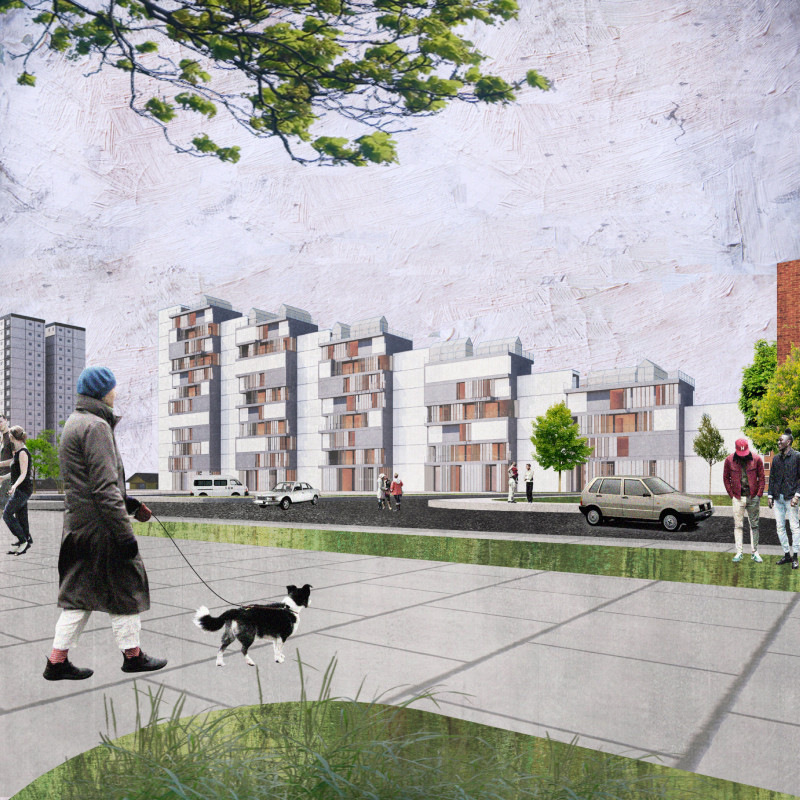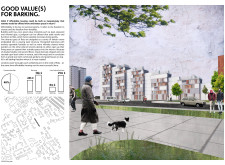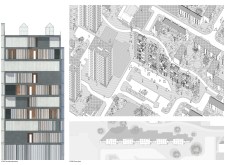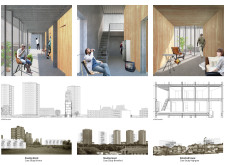5 key facts about this project
The project in Barking aims to provide much-needed affordable housing in an outer borough of London. Located in an area that faces significant housing challenges, the design focuses on creating living spaces that offer both comfort and community. The concept revolves around the idea of maximizing space while keeping costs low, ensuring that tenants benefit from larger and more functional homes.
Modular Configuration
Five different types of flats are created using a modular design approach, which consists of timber rooms combined with a flexible steel framework. This combination allows for various configurations, making it easy to adapt to different tenant needs. Timber is used for its sustainability and inviting appearance, while the steel offers strength and support for the overall structure.
Flexible Living Arrangements
The design emphasizes flexibility in how tenants can use their living spaces. Each flat features elongated balconies with openable facades. This design allows residents to freely adjust their indoor and outdoor environments. In addition, shared winter gardens are included to promote social interaction among residents. These gardens provide communal areas where people can gather, contributing to a supportive community atmosphere.
Dynamic Architectural Form
Units are stacked vertically in an interesting pattern, reminiscent of Tetris blocks. This arrangement not only makes efficient use of land but also creates an engaging visual form. The inclusion of double-height spaces and second floors enhances light and air flow throughout the flats. These design strategies contribute to a more pleasant living environment while maximizing the available space.
Community Integration
A significant feature of the design is the grand stair that leads to communal gardens and greenhouses located on the rooftop. This element provides vital green space in an urban setting, giving residents access to nature and areas for relaxation. The thoughtful integration of these communal spaces encourages interaction among residents and reflects a commitment to improving living conditions in the community.





















































